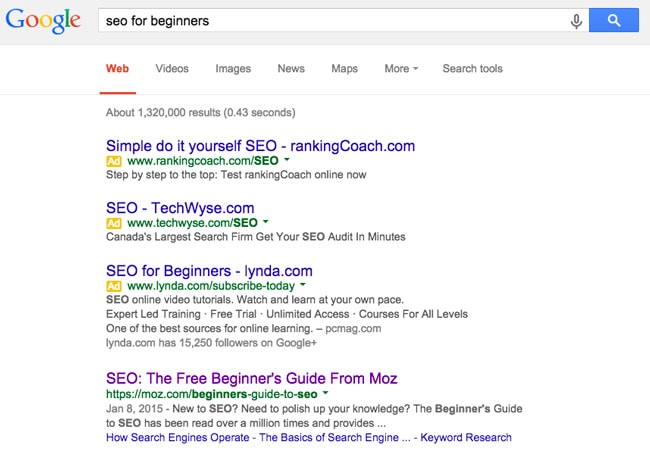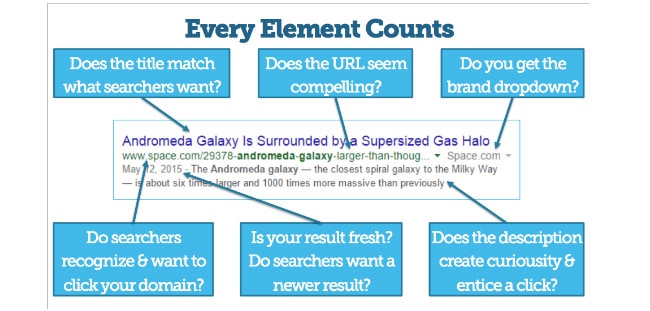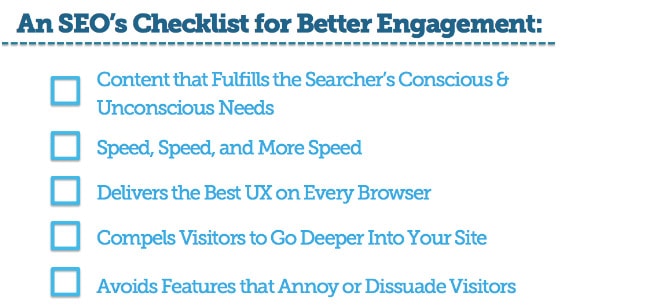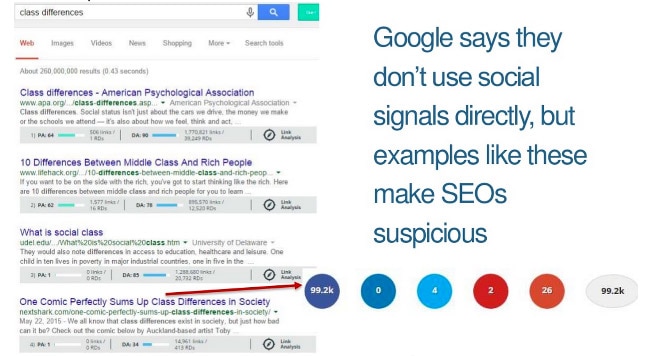
As content marketers, our goal is to engage readers. We want them to stay on the page and consume the entire piece. We want them to be so bowled over by our content that they can’t help but share it with everyone – and then take action.
But we also need search engines to notice our content so that we can get people to our pages in the first place.
So who are we really writing for, humans or machines?
The good news is that you don’t have to sacrifice one for the other. In the battle for eyes on content, humans and machines go together like Bert and Ernie.
During MozCon 2015, Moz’s incredibly popular conference, which is attended by SEO, PPC and content marketing pros from around the world, at least three presentations zeroed in on how content marketers can optimize their content for search engines while still creating awesome and valuable experiences for readers.
In this post, we’ll break down a few takeaways from each presentation that will help you create more strategic, relevant and successful content marketing experiences.
1. Develop content loyalty
As a content marketer, ever wonder what kind of competition you’re up against? Well, here’s a stat shared by Matthew Brown in his presentation, An SEO’s Guide to the Insane World of Content: There are 2.5 million blog posts created each day.
Suffice it to say that the battle to get the attention of readers is heating up. Getting someone to your content is a major win, but you still want them to come back — you want to develop content loyalty.
In his presentation, Matthew shared three ways that content marketers can develop loyal readers.
1. Create long-form content
Content marketers often get requests from their bosses for 350-500 word articles. The belief behind that is that no one reads more than that many words at a time.
According to Matthew, the truth is that long-form content that is well written goes a long ways towards engaging readers. By presenting more information on a specific topic, you’ll get readers to spend more time on the page, increasing your chances of further engagement (e.g. social sharing, product views).
2. Target a specific niche and persona
Before you can write awesome long-form content, you need to know who you’re speaking to.
Matthew encouraged content marketers to target a specific niche, find out what questions they people belonging to that niche are asking, and then provide them with entertaining long-form content that answers those questions.
3. Make content evergreen
Evergreen content is search engine optimized content that is continually relevant, according to Megan Marrs on the WordStream blog. This is content that can help someone with a specific problem regardless of the latest Google algorithm update or latest Facebook advertising trend.
The trick to keeping content evergreen is to maintain it. For example, Moz’s post, SEO: The Free Beginner’s Guide, will have to be updated every few months in order to stay relevant.
As long as people keep finding the article relevant and keep spending time on that page, Google will keep rewarding Moz with the number one position for the search term, “SEO for beginners.”

2. Use PPC to step up your SEO game
It’s one thing to appear in search results, and it’s another to actually get people to click through to your content. You can write a title and meta description that you think will work, but there’s no way to A/B test that in search results to see if something else might work better.
…Or is there?
In her talk, The Perfect Pair: Using PPC Data to Influence SEO, Nebo’s Director of SEO, Stephanie Wallace, outlined a brilliant and creative idea for A/B testing your headlines and meta descriptions:
Use the headlines and body text of your PPC ads to find out which one gets clicked the most!
Simply create a few different sets of ad copy to find out which one generates the most clicks. Once you start to see results, you can start mixing and matching different headlines and body text from the top performing ads to get even more precise.
Stephanie says the best way to get the data you need is to optimize your ads for clicks in your ad rotation settings in AdWords. Because this is based on your past click through rates, you’ll have to run ads for a while before you can access this setting.
Once you’ve run your ads for long enough to reach statistical significance, you can apply what you’ve learned to your organic search pages. Take the winning headline and body text and use that as your page’s title tags and meta descriptions.
There’s no guesswork here: your title tags and meta descriptions are proven winners, and your page now has a much better chance of getting clicked when it shows up in search results!
3. Write for humans and machines
The job of the content marketer has changed dramatically over the last eight years. There was a time when all we had to do was perfectly optimize a page in order to get ranked on Google. Moz founder Rand Fishkin pointed this out in his presentation, Onsite SEO in 2015: An Elegant Weapon for a More Civilized Marketer.
Rand’s presentation outlined four modern-day tactics of SEO that define the delicate balance between writing for humans and writing for machines. The great news is that if you are doing one well, it influences your success with the other.
1. Reach for a higher CTR
Rand encourages content marketers to optimize the title, meta description and URL of a webpage a little bit for keywords, but to optimize them even more for clicks. Every single element of a SERP listing is an important part of getting those clicks.
The image below, taken from Rand’s presentation, shows some questions that we should all be asking before publishing content.

All of these elements combined influence whether or not someone is going to click on your result. Optimizing for clicks — and getting those clicks — shows Google that your result contains the answers that people are looking for.
Don’t forget that, in the end, everything we do is for humans, and when the people see something as relevant, the machines (Google’s algorithm) will sit up and take notice.
2. Beat out your fellow SERP neighbor
Is your content readable and shareable? Does it encourage readers to find out more about your company? Can your readers get through your copy without being bombarded by annoying distractions? These elements make up reader engagement. In the image below, Rand breaks down five points that every content marketer needs to be able to put a check mark next to in order to be successful at content marketing.

Content marketers need to work closely with designers, developers and SEOs to ensure that each of these criteria are met. We can write great content, but if the page takes too long to load or the content is not viewable on a specific browser, you’re not going to get the full potential out of your content.
3. Fill in the gaps in your content
Google’s algorithm is now looking for web pages that have content that demonstrates that a searcher can get all their needs met on a single page so they don’t have to search again.
The bottom line?
Content that isn’t filling in all of the gaps for a searcher won’t be seen as relevant.
For example, if your article is about New York, but does not mention Brooklyn, Queens, Manhattan, etc, then Google isn’t going to consider it relevant. This is another way to make the argument in favor of long-form copy.
4. Earn more shares, links and loyalty per visit
Rand has found that pages that get a large amount of social shares and few links seem to perform very well:

Rand’s believes that Google is looking at engagement data (like time on page, for example) which happens to be highly correlated with social shares. Most likely, Google is taking different factors into consideration when ranking pages in different verticals.
What Google appears to want is to see shares that result in engagement. Knowing what makes readers share can help content marketers create something Rand calls “10x content.” As Rand says, after having analyzed popular posts and planning your next round of content:
Don’t ask, “How can we make something as good as that?” Ask, “How can we make something 10x better than these?”
With the amount of content that’s out there (2.5M blog posts daily, remember?), 10x content will be the only way to stand out in the future.
The two algorithms that power content marketing success
To wrap up, Rand reminded everyone that we live in a two-algorithm world:
Algorithm 1: Google’s input
Algorithm 2: The subset of humanity that interacts with your content.
The mantra that often gets thrown around these days is, “Make pages for humans, not search engines.” According to Rand, this is horrible advice. Content marketers need to do both and take care of both of those variables.
Humans help the search engines decide on which content should be ranked highest. The frequency of clicks, the time spent on a page and the number of times a piece of content is shared all serve as signals to the machines.
At the end of the day, it really comes down to providing value to your readers. When your readers are happy, the search engines will be happy, and you’ll get the traffic you deserve.
Want to find out more about what people had to say at MozCon? Unbounce was there, and we took notes during all the sessions. Check ’em out below!

